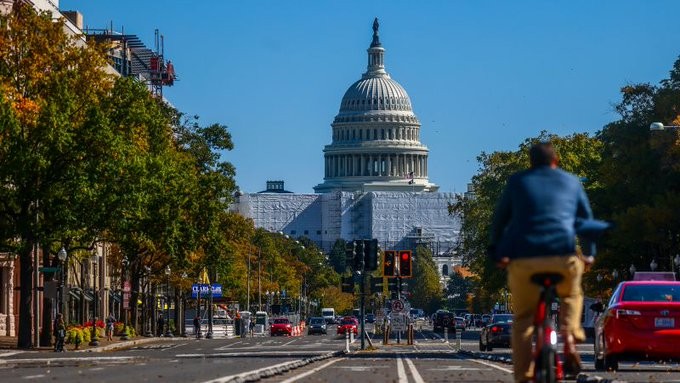 |
| US economic growth rate soars. Illustration photo. (Source: Flipbound) |
As we enter 2023, the predictions from experts are unanimous: a recession is coming. Fortunately, 2023 is almost over, and the recession has not yet arrived.
According to ABC News , over the past year, policymakers in the world's largest economy have overcome difficult obstacles to bring the economy towards a "soft landing". A series of positive signals have marked the economic recovery in recent months.
Specifically, inflation continues to decline from a peak of around 9% in the summer of 2022. Commodity prices fell in November for the first time in more than three and a half years, pushing the annual inflation rate below 3%.
Despite the labor market’s continued weakness, wages rose 0.6 percent in November, helping to offset a drop in personal incomes due to a reduction in government aid. Overall, after accounting for inflation and taxes, household personal income rose 0.4 percent.
Meanwhile, economic growth has soared. The economy grew at a 4.9% pace in the third quarter of 2023, more than double the previous quarter.
That progress on inflation led to a landmark announcement by the US Federal Reserve earlier this month: Interest rate hikes will taper off next year.
Cutting interest rates would ease the burden on borrowers and encourage businesses to invest in projects at lower costs. In theory, such a policy could unleash a spending boom to boost the economy.
Jean Hatzius, chief economist at multinational investment bank Goldman Sachs, described the possibility of interest rate cuts at central banks around the world, including the US, as an "important insurance policy against recession".
Last month, a Goldman Sachs report on the world's largest economy stressed: "The hard part is over!"
As we enter the new year, the outlook for economic growth remains optimistic. Many experts predict that the U.S. economy will slow but not shrink next year. That outcome would allow inflation to return to near-normal levels while the country maintains economic growth.
There are potential pitfalls, however. The Fed has forecast that rate cuts next year could ease the burden of interest costs and boost spending, but such moves risk a rebound in inflation and other risks.
Investment bank Morgan Stanley described rate cuts as a “dilemma” for central banks. “After all, the possibility of a spending boom could boost demand and raise prices again,” the bank stressed.
In addition, many major countries around the world will hold elections next year, including the United States. A change in economic policy in one or more key countries could cause instability and shake global markets.
In addition, recessions remain a topic of discussion in the United States. According to a December survey by the National Association of Business Economists (NABE), more than three-quarters of economists (76%) believe that the probability of a recession in the next 12 months is 50% or less.
"We're basically in a mild recession," said Larry Adams, chief investment officer at Raymond James.
The firm believes the next recession could be “the mildest in history” and could begin in the second quarter of 2024.
Among NABE economists who gave their forecasts for the US economy next year, about 40% said the world's largest economy would begin to improve in the first quarter, while 34% suggested it would take until the second quarter of 2024.
Especially for Americans struggling with high prices amid rising inflation, they all feel a recession is coming.
Source


![[Photo] General Secretary To Lam and Prime Minister Pham Minh Chinh attend the first Congress of the National Data Association](https://vstatic.vietnam.vn/vietnam/resource/IMAGE/2025/3/22/5d9be594d4824ccba3ddff5886db2a9e)
































































Comment (0)